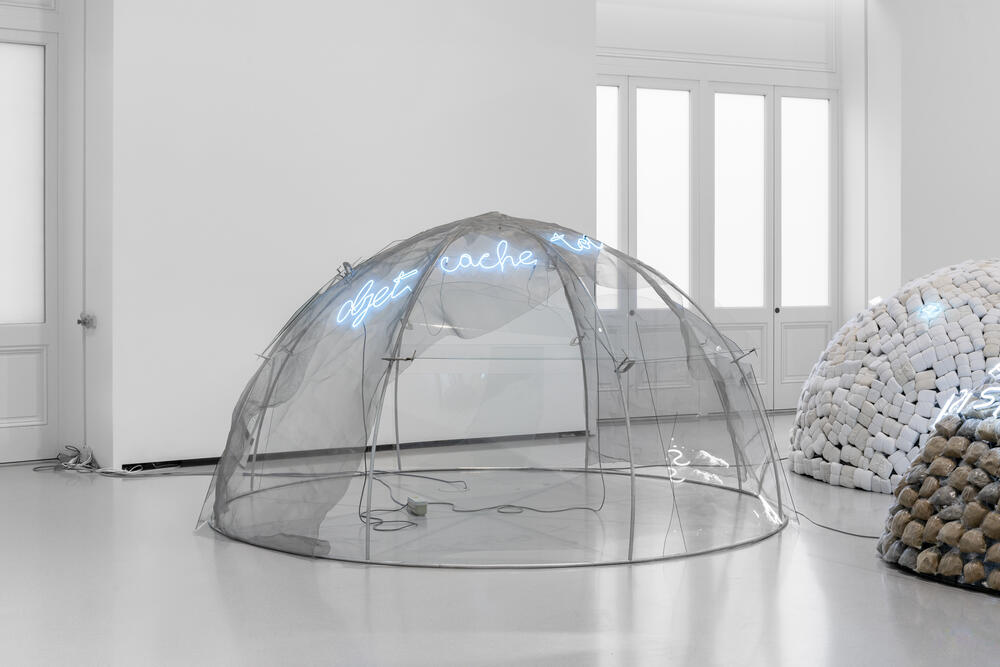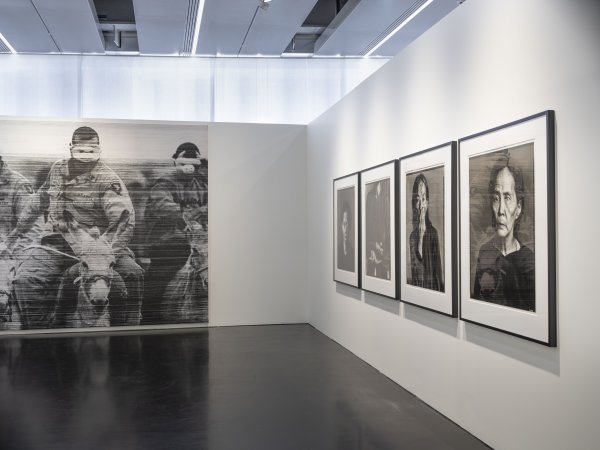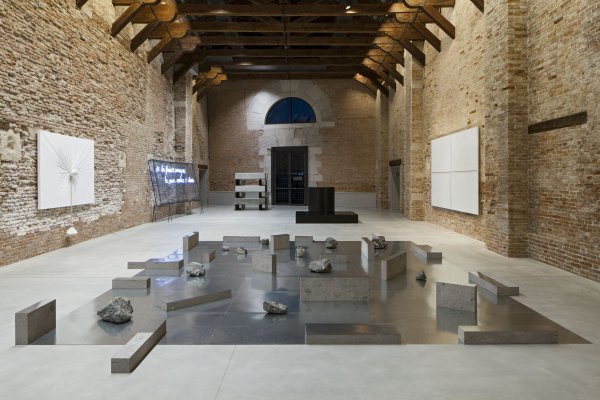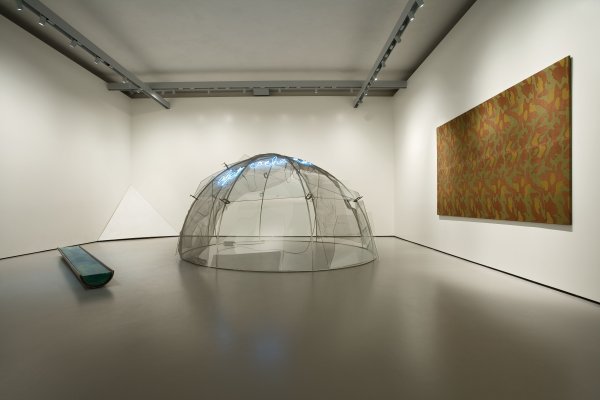Mario
Merz
Mario
Merz
Merz
Neon lights that are “infused” in canvases, nomadic shelters and installations based on the Fibonacci Sequence are testament to Mario Merz's constantly renewed artistic audacity. A leading figure of Arte Povera, the Italian art movement that challenged the cultural industry which he joined as early as 1967, Merz authored a multifaceted, politically engaged oeuvre.
After a first foray into abstract expressionist painting, the artist turns his attention to installations with tubes and neon lights. As they “pierce” the canvas, the latter symbolize the transmission of energy. In the 1970s, Merz creates archetypical constructions such as “igloos”, including Igloo Objet Cache-toi, a fine example held in the Pinault Collection. Later on, Merz finds in the Fibonacci Sequence the organising principle of the living world; it will also be the basis of many of his works such as Accelerazione=Sogno, Tubi di Fibonacci al Neon e Motocicletta Fantasma (1972-1986).
The Mario Merz artworks held in the Pinault Collection were first presented in 2006 at the Where Are We Going? exhibition at Palazzo Grassi, in Venice.
After a first foray into abstract expressionist painting, the artist turns his attention to installations with tubes and neon lights. As they “pierce” the canvas, the latter symbolize the transmission of energy. In the 1970s, Merz creates archetypical constructions such as “igloos”, including Igloo Objet Cache-toi, a fine example held in the Pinault Collection. Later on, Merz finds in the Fibonacci Sequence the organising principle of the living world; it will also be the basis of many of his works such as Accelerazione=Sogno, Tubi di Fibonacci al Neon e Motocicletta Fantasma (1972-1986).
The Mario Merz artworks held in the Pinault Collection were first presented in 2006 at the Where Are We Going? exhibition at Palazzo Grassi, in Venice.






